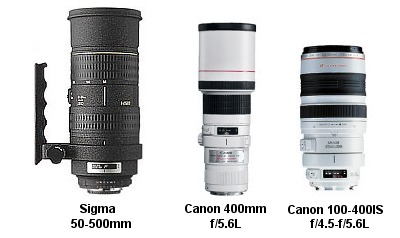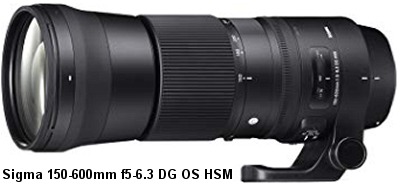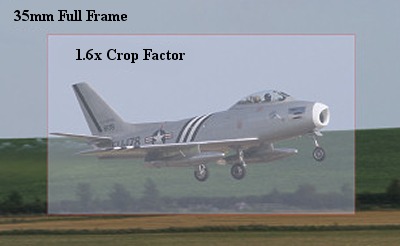Which Camera lens for an Airshow?:
For airshow photography it is usually advisable to use zoom lenses so that you only have to carry a few lenses with you and change lenses less frequently.
For a Canon DSLR you have the choice of a range of Canon lenses or various third party lenses from Sigma, Tamron etc which are available with Canon mounts. You can either buy the cheaper consumer lenses or the more expensive professional lenses. Canon have a professional range of lenses which they designate as the 'L' series (Luxury) which are usually a distinctive cream colour with a red stripe and Sigma's professional series is designated 'EX' (Excellence). These professional series lenses are usually have a better build quality, fast aperture, fast auto-focus, very good optics (image quality), but are more expensive than consumer lenses.
For photographing aircraft on static display then it is recommended to use a wide-angled zoom lens so that you can get close to the aircraft and not have people walking in front of you. For static aircraft that are further away then a mid-range zoom will be useful. For aircraft in the air then you will need a telephoto lens of at least 300mm up to 600mm.

Below are a few telephoto lens options for Canon DSLR users:
A reasonable starter telephoto zoom lens is one of the
Canon 75-300mm f/4-5.6 lenses which are relatively inexpensive, light, and have just enough reach.
A more expensive option would be the very popular
Canon EF 100-400mm f4.5-5.6L IS II USM Lens or cheaper
Sigma 50-500mm f/4-6.3 APO EX DG HSM OS lens (nicknamed the Bigma) which give you more reach with good quality optics. Sigma now also have the new
Sigma 60-600mm f4.5-6.3 DG OS HSM Sport Lens which has a 10x optical zoom, like the Bigma, but has a longer reach of 600mm.

Another very popular airshow lens today is the
Sigma 150-600mm f5-6.3 DG OS HSM Lens which is very good value for money and is available in two options with the cheaper Contemporary version and the more expensive Sports version which has weather sealing.
Other telephoto zoom lenses include the
Tamron 150-600mm f5-6.3 and the
Sigma 100-400mm f5-6.3 DG OS HSM lens which are relatively cheap.
Many of these telephoto zoom lenses have image stabilisation to help in keeping the image sharp when being used handheld at lower shutter speeds and they are all quite larger and heavier compared with the cheaper Canon 75-300mm f/4-5.6 lenses.
The
Canon EF 70-200mm f2.8L USM Lens is a good quality lens with a wide aperture but would need a converter to increase the focal length needed at many airshows.
More expensive telephoto lenses would include the
Sigma 120-300mm f2.8 DG OS HSM Lens and
Sigma 60-600mm f4.5-6.3 DG OS HSM Sport Lens.
Telephoto zoom lenses are very versatile at airshows, where you might have a small single aircraft display and you need to zoom in close, and then a aerobatic display team where you need to zoom back out. With fixed fixed focal length telephoto lenses you are not able to change the focal length but they do have an advantage of usually having better optics (for better image quality) even with the aperture wide-open. You may find that a telephoto zoom lens will produce better images if you stop the lens down but a fixed focal length telephoto lens will produce a good image without doing this. A fixed telephoto lens is also usually lighter than the equivalent zoom lens.
A couple of affordable fixed focal length telephoto lens include the
Canon EF 300mm f4L IS USM and the
Canon EF 400mm f5.6L USM lens. The Canon EF 300mm has image stabilisation but the Canon EF 400mm has a longer focal length for better reach and very fast autofocus. Both lenses have good quality optics and are relatively light.
The following fixed focal length telephoto lenses are much more expensive, have superb image quality, faster apertures but are big and heavy. These include the excellent
Canon EF 300mm f2.8L IS II USM lens which can be used with a converter for a longer focal length and the very expensive but superb
Canon EF 500mm f4L IS II USM lens. Other options include the
Sigma 300mm f2.8 EX DG HSM Lens,
Sigma 500mm f4 SPORT DG OS HSM Lens and the
Canon EF 400mm f4 DO IS II USM lens.
Using your Digital SLR Camera:
In order to use a Digital SLR you need to understand how Exposure works with the Aperture and Shutter Speed, different Exposure program modes, metering etc. More information on using a Digital SLR can be found
here.
Software & Post Processing:
With a modern digital SLR you will be required to do some post processing to your photographs in order to straighten, crop, add contrast, colour, resize, and sharpen your photographs for printing or displaying on a monitor or website. Your DSLR camera should come with appropriate software but it is preferable to use either Photoshop or Paint Shop Pro. More information on post-processing can be found
here.




